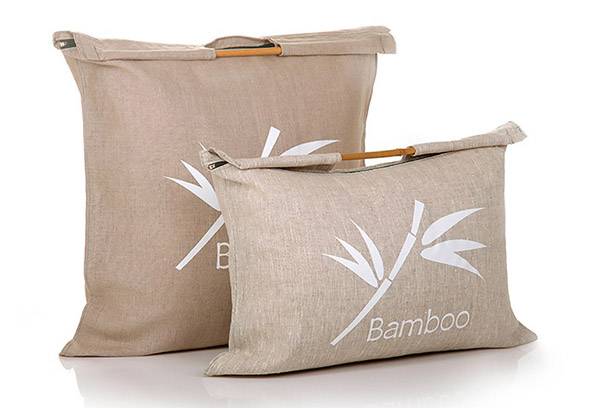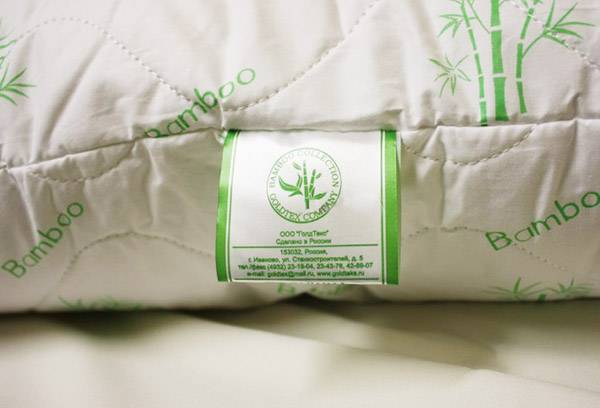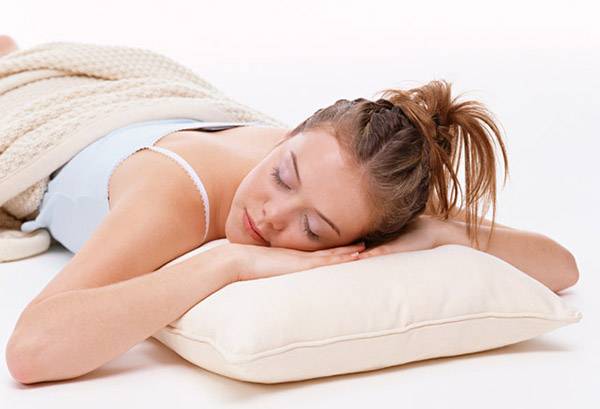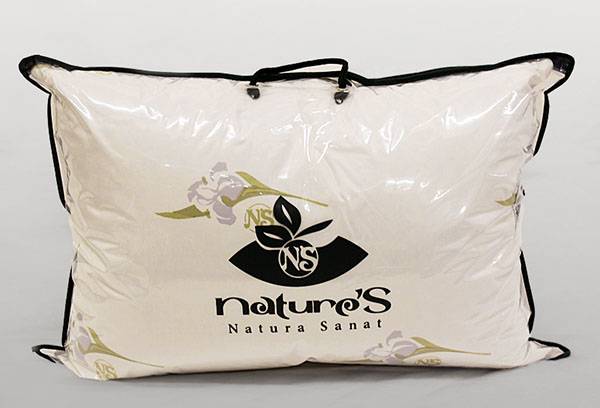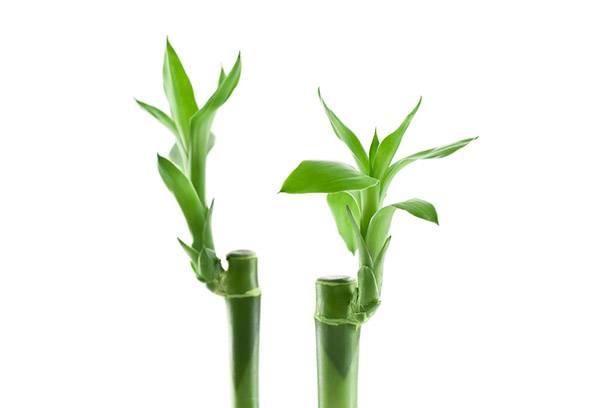3 myths about bamboo pillows: what are more, pluses and minuses?
Content:
Few people think that the right pillow choice is not only a guarantee of good sleep, but also the prevention of a number of problems with the back and neck. They say that you can kill two birds with one stone by buying a pillow filled with bamboo fiber, but is it worth it to trust the rumors? The editors of purityis.decorexpro.com/en/ have learned about the pros and cons of bamboo pillows and are ready to share this information with you!
Myth 1 - a bamboo pillow is made entirely of bamboo
It is hard to imagine what a bamboo filler looks like without ever seeing it: are it small chips, or thin reeds, or some other exotic format? In fact, everything is much simpler: bamboo fiber is something similar to a synthetic winterizer, only of natural origin.
The only problem is that with a probability of 99%, the filler of such a product will not consist of plant fibers. Seeing the bright inscription "100% bamboo", many are ready to give their money for natural goods without any hesitation, but we strongly recommend not to rush. Carefully study what is written on the package: the composition of the product may not be exactly as you imagine it.
- Bamboo fiber is very soft, and if the filler were 100% of it, sleeping on such a pillow would not be too pleasant, because it would not hold the volume and quickly flattened.
- In this regard, in such products, a mixture of bamboo threads and synthetics acts as a filler.
- But even more often, only a cover is made in bamboo pillows from bamboo threads: inside you will find the usual hollofiber, “swan fluff” or “memorial fom”.
It seems that we are not even close to 100% bamboo.
Myth 2 - bamboo pillows are natural and environmentally friendly
We don’t know what good old cotton did not please here, but bamboo fibers really have become incredibly in demand amid the popularization of all “environmentally friendly” ones. Unfortunately, their vaunted naturalness is another myth.
- The problem is that bamboo yarns, obtained by combing from the stem by hand, are incredibly expensive, and what is sold in our stores is nothing more than bamboo viscose. Bamboo is crushed into chips, treated with chemicals and reagents to the state of a viscous slurry, from which the threads are drawn. How much such material can be considered natural is up to you.
- Another fact confirming that bamboo fiber is an artificial material based on natural raw materials is its hypoallergenicity. Yes, this is more a virtue than a disadvantage, but a truly natural plant fiber simply cannot rule out a 100% risk of allergies.
- Well, and the last: one of the advantages of bamboo pillows is that bugs and other microscopic insects do not settle in them. As in synthetics. Manufacturers of feather pillows or pillows with exotic vegetable fillings like buckwheat or sawdust will never give you such a guarantee.
By the way
Mechanical bamboo fibers are labeled Bamboo linen, and factory fibers are labeled Bamboo viscose or Bamboo rayon.
Add to this the first myth and information that there is a synthetics inside such a pillow - and you won’t want to overpay for it.
Myth 3 - bamboo pillows have beneficial effects on the skin
For marketing purposes, it wasn’t just written about bamboo pillows that they treat cancer: peptides that rejuvenate the skin, antibacterial properties, and even improved sleep through inhalation were mentioned. But how does it work if ...
- ... bamboo in such pillows, as it turned out, is not so much;
- ... peptides and other useful substances after chemical treatment in the fibers are unlikely to remain;
- ... a bamboo cover will not come into contact with the skin of the face: you will probably put a pillowcase from the bed set on it.
Important!
The only thing that will help in facial care when it comes to pillows is the frequent washing of pillowcases and the regular washing of the pillow itself.
It turns out that the chance of getting any peptides is much higher when using a regular cotton pillowcase, although it should be noted that no studies have been conducted in this area.
Advantages and disadvantages
Myths are dispelled, but this does not mean that bamboo pillows do not have positive qualities. Bamboo is not to blame for the fact that sellers have turned respectable material into a marketing duck. Any product has pros and cons, and bamboo fiber is a worthwhile replacement for synthetics.
Here are some good qualities of bamboo synthetic pillows.
- It is easy to care for them, as both the cover and the filler can be washed in a washing machine without the need to go dry cleaning.
- Bamboo fiber is very durable, so that the cover does not deform even with frequent washing and frequent use.
- If you decide to sleep on such a pillow without a pillowcase, you will notice how soft and pleasant to touch their bamboo cover.
- As we already said, the tissue is hypoallergenic, and the risk of parasites in the pillow is zero.
- Bamboo fiber in tandem with synthetic filler does not smell and does not absorb odors.
- The porous structure of the threads will allow air to circulate better, weathering sweat.
There are still a couple of minuses, but they are typical for synthetic fillers in general.
- If you have a sore neck or back, such a pillow may not work, especially if you know that a regular synthetic winterizer is not suitable for you.
- The caking speed of the filler depends on the quality of holofiber and sintepon, but on average it is one and a half to two years, which is not so much.
Important!
Bamboo cloth does not absorb moisture well, which can be a problem if you sweat a lot at night.
Then why bamboo?
Somehow it turns out strange: in bamboo pillows, as it turned out, there is nothing special, but on the Russian market it is positioned as something revolutionary, innovative, exotic. How did it happen?
If we ask you where bamboo grows, you will probably answer that in Asia. And you will be right: in Asian countries this plant is more common than in other parts of the world. It does not require special care and grows without problems in the wild. That is, despite the cotton plantations in China, bamboo turns out to be cheaper material, which means that it simply could not but gain popularity. Now made of bamboo viscose towels, socks, household rags and much more. And the prices of such products in China are lower than those of similar cotton.
At the same time, the properties of bamboo viscose are still for the better different from the properties of synthetics, and the compromise between price and quality has been and will always be appreciated. Therefore, we do not discourage you from buying such a pillow, but urge you to think: does the asking price correspond to what you get in return? The price of such a product should not be much higher than ordinary synthetic pillows, otherwise you may be disappointed.
Those who expect a miracle from a bamboo pillow will have to grieve: a bamboo pillow will not become a panacea for neck diseases, insomnia and facial skin problems. Well, if you need to change the pillow and at the same time you want something unusual, and your neck tolerates sintepon fillers well, then why not please yourself with such a purchase?
